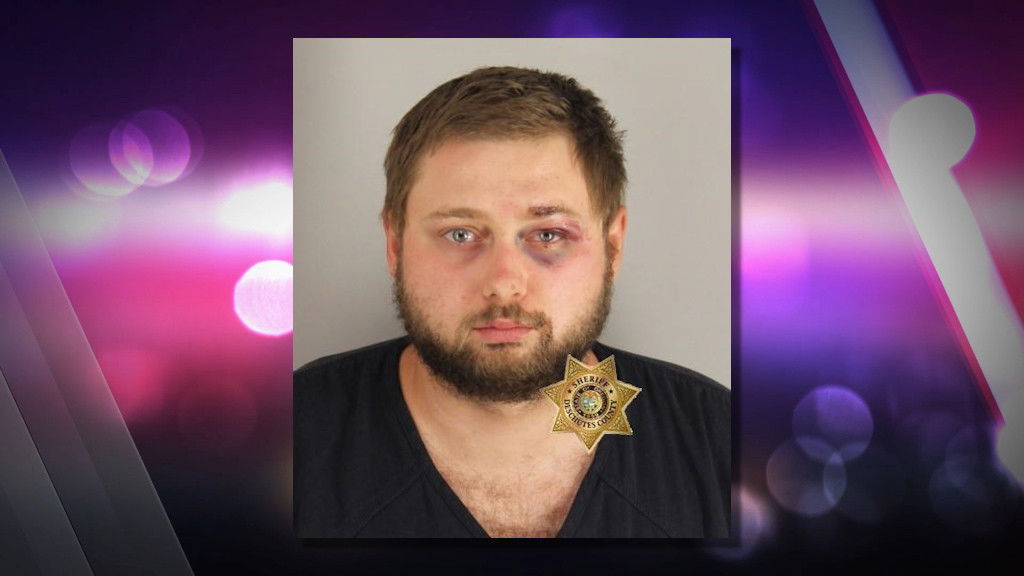Prosecutor opposing Cranston release claims he acted out of ‘hate, anger’ — not in self-defense

Deputy DA details witness, video timeline from fateful night
BEND, Ore. (KTVZ) – A Deschutes County prosecutor has made his case against a defense attorney’s request to have defendant Ian Cranston released on bail pending his November murder trial, presenting a timeline of the fateful night's events and arguing he was motivated not by self-defense but by “anger, hate and frustration” with Barry Washington Jr.’s behavior.
A one-day hearing is scheduled next Monday before Deschutes County Circuit Judge Beth Bagley on defense attorney’s Kevin Sali’s request for the release of Cranston, who has pleaded not guilty to second-degree murder and other charges in last fall’s fatal shooting outside a bar in downtown Bend.
In a 20-page filing last week (warning: graphic language), Deputy District Attorney J. Michael Swart also argues the hearing should be conducted by sealed affidavits, including witness statements and exhibits, to protect Cranston’s right for a fair trial, since some material could be withheld or ruled inadmissible at that time. Cranston is scheduled to attend the hearing by video from the county jail.
Based on witness statements and security video, Swart details a timeline of what happened after Washington and a friend entered The Capitol on Oregon Avenue late the night of Sept. 18, followed three minutes later by Cranston and his fiancée and a friend. Swart said both of Cranston's companions knew he had armed himself with a handgun earlier that evening.
A few minutes after midnight, Washington left and stood on the sidewalk, talking to others, followed a couple of minutes later by Cranston, his friend and fiancée.
Washington soon encountered the three and complimented Cranston’s fiancée, which the friend said Cranston did not like. When Washington kept talking to the fiancée, Cranston used expletives and told him to move away. Soon, “it escalated quickly,” Swart wrote, and after more words were exchanged, Washington punched Cranston twice, then backed away.
The prosecutor said it was not clear if Cranston fell down, but he quickly got up and pulled his handgun from his waist, holding it at his side in his right hand as he approached Washington. An argument ensued, and the fiancée and friend claimed Washington “started flashing gang signs. This accusation is at issue,” Swart added.
The prosecutor said surveillance video showed Washington “arguably leaving the fight,” but “the argument further unraveled” when Cranston’s fiancée, with her cellphone out filming Washington, was “walking towards him and stating ‘Say hello, say hello,’ in what can only be described as a provocative manner.”
“Further provoked, Washington stepped toward (her)” and pushed the phone away, with Cranston standing behind her, “still holding his handgun at his side.” Cranston’s friend intervened and called Washington an obscenity, and as the friend and Washington “were struggling and tussling,” Swart said Cranston “took a small step forward,” to between his fiancée and friend, “and pivoted with his right forward into a shooting stance. He then pointed and fired his handgun into Barry Washington’s torso.”
The prosecutor said “the video time stamp shows that for 17 seconds, Cranston looked around with his firearm still at his side” before “he walked to and leaned over a dying Barry Washington, eventually rendering aid.”
Swart said Cranston’s friend later told police Washington “never made any comments to them that he would hurt or kill them” and “that he was surprised Ian shot Barry,” as well as that “he did not feel like he was in fear for his life and that Barry was just a drunk dude.”
The prosecutor said Washington, after being told with expletives and “provocative words” to leave, “wrongfully punched Cranston twice, causing Cranston to suffer a black eye as well as wounding his pride. Yet, Cranston’s conscious objective after getting hit was to produce his loaded handgun and then wait for 26 seconds with his handgun at his side for the right opportunity to take his vengeance on Washington.”
Swart also noted that Cranston’s fiancée told police, “Ian doesn’t back down. He’s defensive over me, and he’s not the kind of guy to be pushed around.”
Cranston’s actions that night, Swart wrote, “demonstrate not self-defense but rather the actions of someone who is settling the score for being punched earlier in the face. As such, the proof is evident and that presumption is strong that Cranston was motivated not by self-defense but by anger, hate and frustration with (Washington’s) behavior.”
